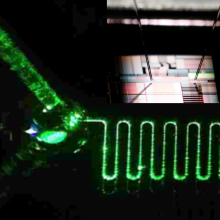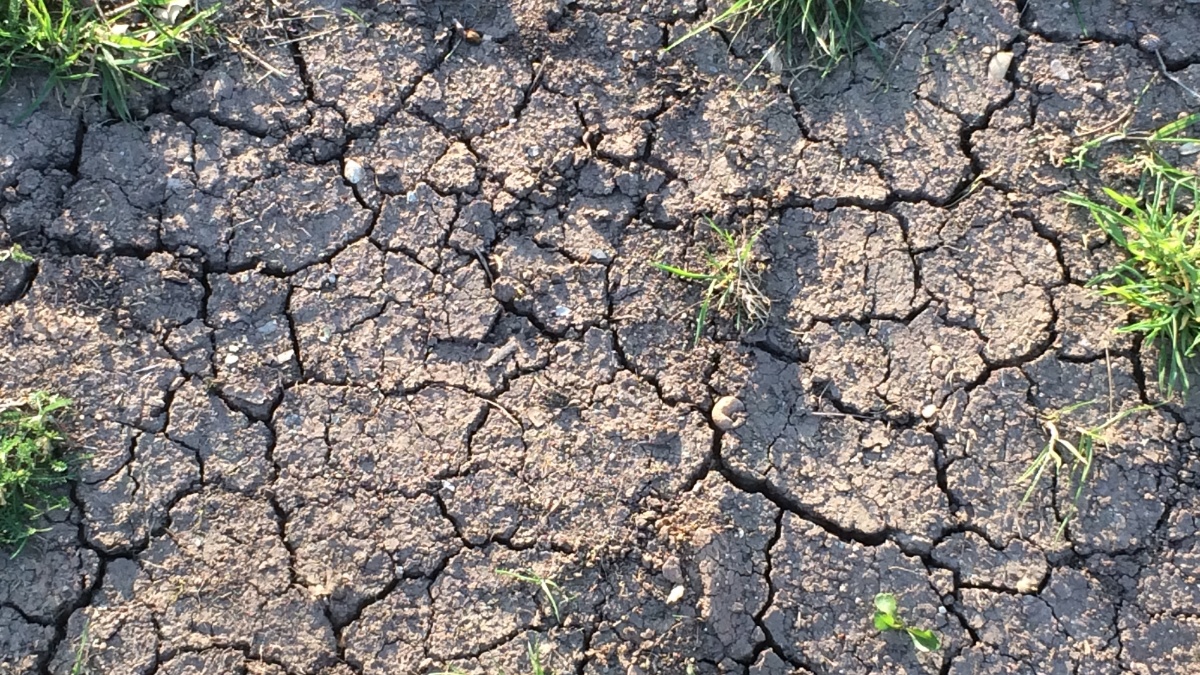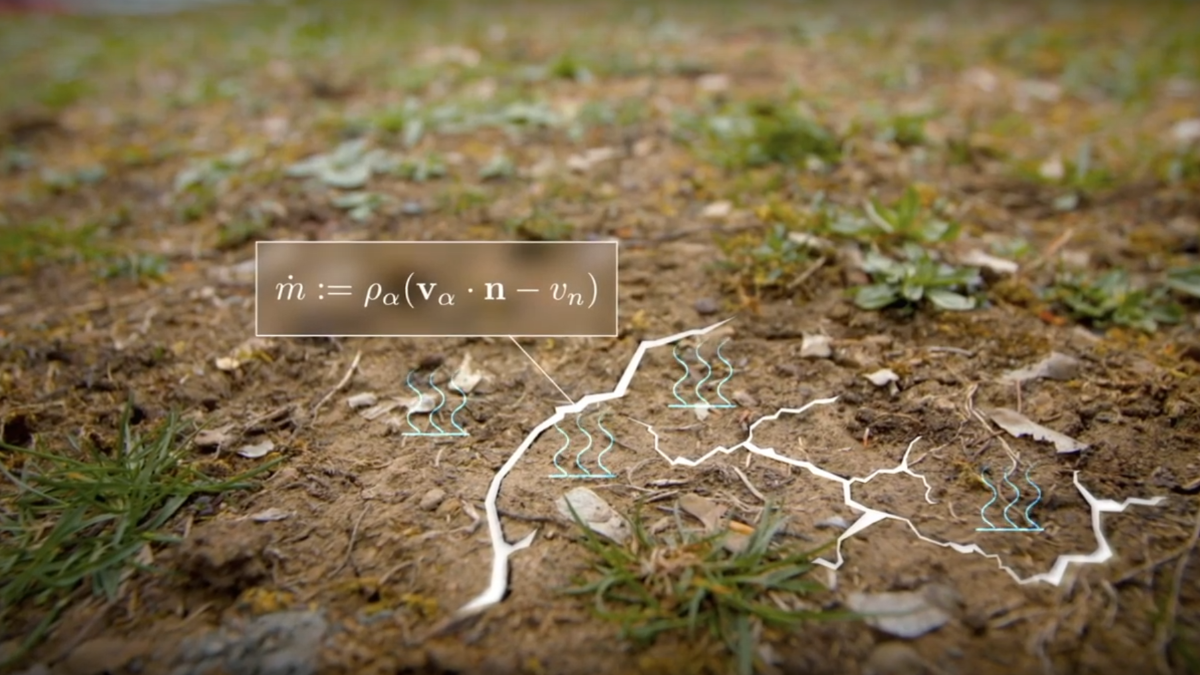“For the University of Stuttgart, ‘bold research’ means daring to take risks, pursuing unconventional approaches and conducting risky experiments – in a university culture which strives to be interdisciplinary and open to new and creative ideas”, says Rector Wolfram Ressel.
“In order to deal with the big challenges of our time, from climate change to social inequality, we need to do more to overcome the boundaries between departments and disciplines.” Baden-Württemberg's Minister for Science, Research and the Arts Theresia Bauer was also a guest at the strategy dialog. “As far as I’m concerned, bold research is more than a buzzword. It is more than a concept being followed by our universities and research institutes. For me, bold research has been a defining objective and model of science policy for the last ten years”, she says. She says that a number of projects have already been launched because somebody reached for the stars with a promising idea. As examples of this, the minister names the ARENA 2036, the Cyber Valley and the “Mobility of the Future” innovation campus at the University of Stuttgart.
The second strategy dialog offers researchers the opportunity to meet online and exchange ideas. “It’s about going on a journey together as a team. Communicating and having conversations is important so that we can support one another and develop bold ideas”, says Felix Rundel, co-founder of the agency futurehain, who moderates the event. Young scientists present their ideas in small groups and then discuss them with experienced professors.
Virus detector on a silicon chip
One of the ideas comes from Niklas Hoppe, research assistant at the Institute of Electrical and Optical Communication Engineering. He wants to develop a device which can recognize viral particles in ambient air. It could be contained inside an air-conditioning system, and warn people in hospitals or supermarkets for example if a certain amount of dangerous particles are present in the air. When Hoppe came up with the idea a few weeks ago, at first he thought that a system like this would be impossible to implement. But then he read an article about a breath testing system which had been developed in Poland, a kind of alcohol test for the coronavirus. “The researchers in Poland are working with spectroscopy, but the exact procedure is a secret”, explains the scientist.
Though Hoppe wasn’t discouraged, and carried on with his research until he came across an article in the journal Nature explaining how researchers use Raman spectroscopy to analyze saliva. Tests like these are normally carried out using large devices. Hoppe and his team want to store the system compactly on a silicon chip. “Our system is also based on Raman spectroscopy. This method involves stimulating types of molecular vibration using light. We install a small waveguide on the chip, which the light then passes through and stimulates the molecules. We do this by using two different light wavelengths. The light interacts with the molecules”, explains Hoppe.
This interaction changes the color temperature or the light becomes lighter and darker. This can then be measured and detected by the researcher. The Nature article says that there is a certain characteristic which is activated by the coronavirus. If the chip recognizes this characteristic, it can be said that the virus is present in the ambient air. Hoppe and his team are working on implementing the Raman spectroscopy on the chip. In order to develop his idea with the room filters, he needs to work together with various scientists from different disciplines. “We didn’t use viruses and harmful substances to analyze them”, he says. “We had to work together with virologists to try it out in the next step.” The early career researcher estimates that it will take two to three years to put a project of this kind into action. But even if it does take time to achieve the end goal, he believes that every step represents a major step forward.
Instability of soil due to salt water
How does mathematics help to solve ecological problems? Carina Bringedal, Junior Professor at the Institute for Modelling Hydraulic and Environmental Systems (IWS), has the answer to this. She is carrying out research into the salt content of water. In Mediterranean countries such as Tunisia, water from the top layers of soil quickly evaporates when the sun shines on it. The salt contained in the water remains in the soil, and the salt concentration in the residual water of the soil increases. This makes the soil infertile for plants and no longer usable for agriculture. Bringedal is investigating the density of the water mathematically, since this depends on the concentration of the salt. “If the water has a high salt content, the density is higher”, says the scientist. “A denser liquid emerges at the top of the soil than at the bottom. A system is created which becomes unstable due to the influence of gravity.”
Due to the unstable system the liquid can be made to flow downstream, which transports the high salt concentration away. Bringedal is looking into the circumstances under which the instabilities arise. “They depend on the permeability of the soil”, she says. “How easy is it for the water to flow? And how high is the evaporation? I’ve found out that a lot of parameters are important in predicting whether any signs of instability will appear.”
Bringedal's research idea is attracting a lot of interest among the other participants in the strategy dialog. Prof. Rainer Helmig from the Institute for Modelling Hydraulic and Environmental Systems adds that the salt content in water is not just a problem for soils but also for buildings. In Mediterranean cities, the salt in the concrete walls of buildings has an impact on the buildings’ lifespan. Big changes in salt concentration also lead to big differences in the density of the water, which results in instability. He adds that researchers working on a project in Israel are trying to control the evaporation of water by using a membrane. Bringedal also wants to find out how she can prevent instability. “It was very helpful to get feedback from other professors”, she says. “They have a lot of contacts with other researchers, and they know who to get in touch with if you want to learn more.”
From digital humanities to quantum humanities
With the arrival of the first widely-available quantum computer (QC), researchers asked themselves how the potential of this new technology can be used to answer existing questions from the digital humanities or answer completely new ones. Johanna Barzen from the Institute of Architecture of Application Systems (IAAS) is exploring which quantum-based algorithms can already be applied for the purpose of using quantum computers to support the analysis of data on film costumes. Barzen hopes to find out how costumes can be used in films for communication purposes. For example, how can a film costume be used to express a character trait, the voice of a role, their transformation or information about the time and place? Which “tried and tested solutions” do costume designers rely on to make sure that audiences can quickly tell a cowboy from a bandit?
Barzen considers the field of machine learning to be particularly beneficial. “We use quantum-based machine learning algorithms such as feature engineering, clustering and classification to analyze costume data from films. The results of quantum-based solutions are much more precise than a solution implemented in the traditional way, particularly for allocating costumes to clusters which have already been detected”, she says.
Working with quantum computers is still strongly experimental, and is often not intuitively accessible for users without a solid understanding of math and physics. Nevertheless, in order to still be able to use the practical advantages, such as for example the ease of precise classification, Barzen wants to build up the practical knowledge for a community. “We want to use our work to reduce the barriers to entry to also allow humanities research to take place into the potential of quantum computers. This is why we first provide initial application knowledge and implementation building blocks which can be reused”, explains the early career researcher.
Strategy dialog encourages interdisciplinarity
The University of Stuttgart supports scientists in overcoming the challenges of the future together – in interdisciplinary cooperations, backed by personal and specialist networks and in the spirit of the “Stuttgarter Weg” (Stuttgart Way). In 2020, the focus of the strategy dialog was on sustainability. One result of this is the Green Office, which has now opened. The second strategy dialog emboldens researchers to take risks and follow unconventional approaches. “Only those who dare to fail greatly can ever achieve greatly”, says the Rector, quoting Robert F. Kennedy, underlying his commitment to creating a culture in which scientists can deal with setbacks in a more relaxed way. The strategy dialogs are held as part of a series. They build on the positive experiences in the university-wide SWOT workshops prior to the application for funding as a University of Excellence, and are one of the “university allowance” measures from the German Research Foundation (DFG).









